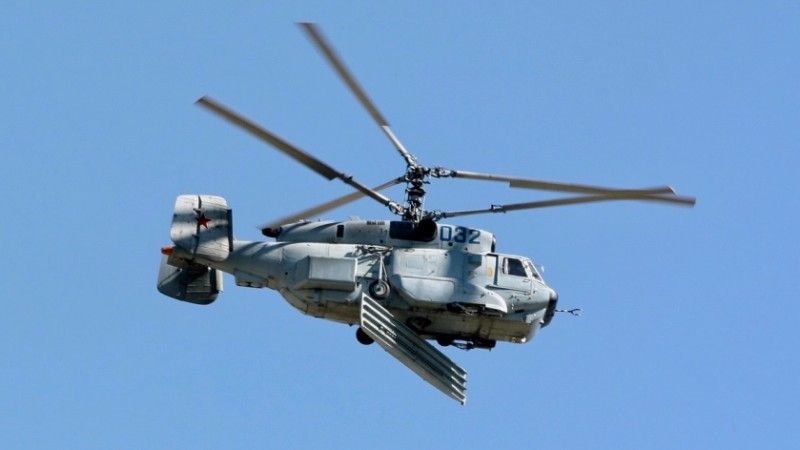Russian Airborne Early Warning Helicopters in Crimea. Missile Threat in Black Sea.

Russian Black Sea Fleet aviation unit, stationed in the Crimean Peninsula, has received a Ka-31R aerial early warning helicopter. The radar that this platform has been fitted with can be utilized for the purpose of enhancing effectiveness and range of the anti-ship missiles deployed to the peninsula. The aircraft may be used to guide 3M14 Kalibr subsonic missiles, 3M55 (P-800) Onyx supersonic missiles and 3M22 Zircon hypersonic missiles towards the enemy vessels.
According to “Izvestia”, the new Ka-31R has been handed off in mid January and it became a part of the 318th Independent Mixed Naval Aviation Regiment of the Black Sea fleet, stationed at the Kacha airbase in southwest Crimea. As stressed by the Russians, it is the first, but not the last aircraft of the type that is destined to be stationed at the peninsula that was a subject to annexation back in 2014.
Ka-31R is an airborne early warning helicopter designed for carrier operations and for acting as an embarked helicopter of large surface combatants as well. Design-wise it is based on the Ka-29 transport helicopter with a peculiar counter-rotating, coaxial rotors. The aircraft also features partially retractable landing gear to enable the operation of the E801M Oko radar’s rotating phased array. The antenna is stowed horizontally under the fuselage, during landing and take off. The helicopter has a crew of 3. Its take off weight is 12.5 tonnes, while its range is 700 kilometers. It may stay up in the air for 2.5 hours.
Utilizing these aircraft allows the user to greatly extend the distance at which surface and airborne threats can be detected. The E-801M Oko (Eye) pulse-Doppler radar, according to the Russian media, can detect small-RCS targets such as cruise missiles, at distances of 150 kilometers, while standard naval targets can be detected at distances of more than 250 kilometers. The radar may be used for initial guidance and precise target designation for anti-ship missiles deployed to Crimea or carried by the warships of the Black Sea Fleet.
This is a major threat for all vessels operating in the region. Back in 2018 it was confirmed that K-300P Bastion-P anti-ship missile system has been deployed to Crimea, with the P-800 Onyx (NATO Codename: SS-N-26 Strobile) acting as the effector, with a range of up to 350 kilometers, reaching speeds of Ma 2.5. Meanwhile, the Russian fleet uses the Kalibr missiles that can be employed both against land targets, as well as against naval ones. Zircon hypersonic missiles are in the testing phase now. Not only are they viewed as a strategic weapon as they are also showcased as a specialised anti-ship system. The missile can attain speeds of up to Mach 9. The effector, meanwhile, is said to have a range exceeding 1000 kilometers. Smaller vessels are expected to use a variant that reaches speeds of Ma 6 and with a range of less than 500 kilometers.
Thanks to the unique capabilities offered by a helicopter fitted with a very capable radar and datalink, namely the Ka-31R platform, the Crimea-stationed forces now have improved anti-ship and anti-aircraft capabilities. The capabilities that Ka-31R offers would increase accuracy and range of tracking the objects maintaining their presence in the Black Sea area. The Russians claim that the above constitutes a response to the possibility of Ukrainians receiving the Harpoon anti-ship missiles from the United States of America. Another reason for presence of the helicopter is seen in intense activities undertaken by US reconnaissance UAVs and aircraft and NATO vessels in the Black Sea region.



